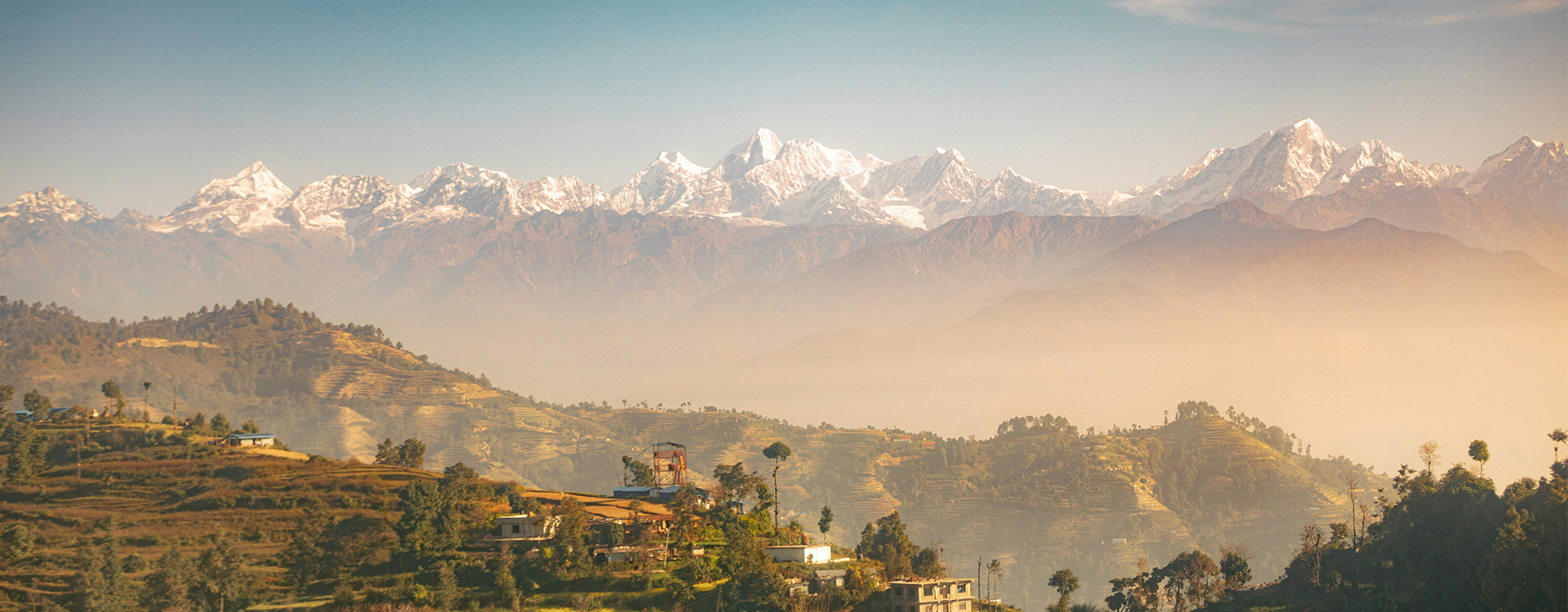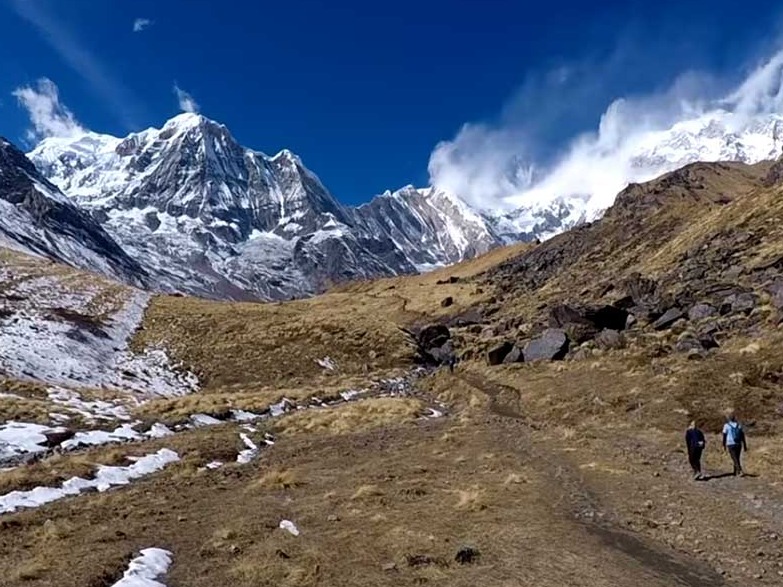- The Majestic Himalayas
- Spirituality and Heritage of Ancient Temples
- Adventure Awaits Around Every Corner
- Exceedingly Unique Cuisine
- A Crossroad for Mindfulness and Healing
- Biodiversity and Wildlife
- The Warmest Hospitality
- Rich Culture and Timeless Traditions
- Celebrated for All Twelve Months
- Travel all Year Round
- Starry Nights and Remote Getaways
- Treks for All Levels
- Traveling on a Budget
- Photographer's Heaven
- Easier Than Ever to Experience New
- Nepal Is More Than a Destination—It's a Life-Changing Experience
- FAQs
- Is traveling to Nepal safe?
- Do travelers need a visa for Nepal?
- At what season is visiting Nepal the best?
- Is trekking in Nepal only for the horse condition marvels?
- What are the basic things to carry to Nepal?
- Is English widely used in Nepal?
- What types of food are eaten in Nepal?
- Is it necessary to have a guide or porter with me for trekking?
While some locations may only have an effect, others have the power to change a person; Nepal falls into the latter group. It is not only a striking location between the serene Terai jungles and the powerful Himalayas, but it is also a remarkable little nation that captivates you with its culture, adventure, and soul. It is the location of temples that reverberate with gold and shrines that are crowded with people and chanting. Every path, whether it's a high-altitude trail or an old city route, leads to the unforgettable, and prayer flags flutter in the mountain breeze. Nepal can offer something special: the sense of being fully alive, regardless of whether one wishes to experience an exhilarating Himalayan trek, find serenity in a monastery, or develop a close relationship with the world (and oneself). Indeed, this is the reason that such a fantastic adventure needs to be on every traveler's bucket list.
The Majestic Himalayas
Nepal, of course, is known for the Himalayas, so much so that the mountains become the primary motivation for practically every traveler who adds Nepal to his or her bucket list. Eight of the world's other ten highest mountains (including the illustrious Mount Everest) are found in Nepal, and this will excite anyone passionate about trekking, climbing up some snow peaks, or just enjoying any adventure. Reputed routes such as the Everest Base Camp Trek and the Annapurna Circuit offer not merely exertion but one of the best and most spectacular mountain sights anywhere in the world. Every single one of those trails will take you through fascinating landscapes, traditional Himalayan villages, and sacred sites, all of which are very interesting and make for a great blend of nature, culture, and self-exploration. A trek in the Himalayan mountains is all the more great if you're a seasoned trekker or just looking for pleasant hiking trails, so we want to promise you that an experience here remains humbling and unforgettable.
Spirituality and Heritage of Ancient Temples
Nepal is, indeed, where the Lord Buddha was born, and it is one of the most spiritual nations in the whole world. This land is sacred to Hindus as much as to Buddhists, since the Hindus consider worshiping this place holy. Somehow, the daily living that goes into the religious and traditional practice here is written into cities like Kathmandu, Patan, and Bhaktapur as the very living manifestations of this culture; traveling through ancient temples and sacred shrines, including sites under the influence of UNESCO. This would be experiencing a traditional puja ceremony at the Pashupatinath Temple, the holiest among all Hindu temples dedicated to Lord Shiva, or just feeling the peaceful rhythm of monks' chants at Boudhanath Stupa, one of the largest Buddhist stupas around the world. Be it monasteries, spinning prayer wheels, or just passing through temple courtyards, one thing is for sure: this country contains very powerful spiritual energy since Nepali spiritualism is deep. All "travelers seeking spirituality," be they religious tourists or otherwise interested in more incredible cultural linkages, should travel to Nepal as an invitation to what would be an unforgettable experience of the sacred.
Adventure Awaits Around Every Corner
If you are the type of person who loves adventure, Nepal is the playground for you. This country in the Himalayas is best known for a range of thrilling activities set against some of the most spectacular backdrops that one can imagine. Breathe in the fresh air while paragliding over Pokhara to see an amazing view of the calm lakes and snow-covered peaks, or go white-water rafting into the Himalayan rivers of Nepal. Picture also bungee jumping from the top of high mountain gorges for the boldest of the bold. What else? Mountain biking in Nepal, for the off-roaders, is an unmatched experience: rough, raw, and breathtaking. However, what makes these adventures truly special is that they are not just exciting but, indeed, very much within the splendor of its natural beauty and culture, despite Nepal being the greatest adventure travel destination, where tourists throng all year round.
Exceedingly Unique Cuisine
Nepalese cuisine represents that portion of the cultural heritage of the country and lays claim to diverse influences. Much like its Tibetan, Indian, and particular mountain influences, Nepali food has flavors that vary and tantalize even the whole palate. Though hearty and filling, for example, the typical steamed dumplings called momo contain ingredients like vegetables or meat. Another would be thukpa, a noodle soup that is very popular among locals. Everything else is comfortingly spicy. And, of course, there’s dal bhat at the end of any trip to Nepal, this being a great dish of rice with dal and vegetables, where one feeds off a delicious staple food that truly fuels locals and trekkers alike. Whether walking through Kathmandu is a bustling throng recovering from an exhausting trek, Nepali cuisine has the same perseverance, tradition, and hospitality written into the footprints one leaves behind. Not just food, but even an experience, and everything about discovering the soul of Nepal on a plate.
A Crossroad for Mindfulness and Healing
Nepal serves as more than just a travel destination; it explains the viewpoint that tourists consider this country as their retreat for spiritual progress and personal renewal. From a yoga retreat in the Himalayas to meditating in peaceful Buddhist monasteries or experiencing some old Ayurvedic healing practice, this country is about coming back to reconnect with yourself and gaining worthwhile inner peace. All these aspects create an ambience to travel towards mindfulness: the placid landscapes and the peaceful backdrop of life create the perfect avenue to slow down, reflect, and restore balance. Most come to Nepal only for what almost everybody would call its stunning views and leave with a calmer mind, a more definitive sense of purpose, and a fuller heart. A spiritual heaven where the wisdom of meditation, yoga, and holistic healing propagates into a carved oasis for a tiring and bustling life.
Biodiversity and Wildlife
Across the magnificent snow-capped peaks that border the Himalayas, Nepal reveals an entirely different side of itself—one that is rich, green, and teeming with biodiversity. Some of the southern plains, Chitwan National Park, and Bardia National Park promise thrilling jungle safaris that will help you see some of the most iconic animals in Asia, including the Bengal tiger, one-horned rhino, and Asian elephant. These protected parks give shelter not only to rare and exotic wildlife but also to a variety of rare and exotic bird species that make birdwatchers' delightful haunts. Whether wading through Chitwan's subtropical jungles or into Bardia's wilderness, Nepalese wildlife sanctuaries do offer an entirely different experience that emphasizes the beautiful natural scenery and ecosystems that the country boasts. Parks are not just for wildlife lovers and nature enthusiasts; they put into a much different light the wild face of the country.
The Warmest Hospitality
Neither the rich culture of the people nor the scenery is what truly distinguishes Nepal. The phrase "guests are gods" is widely used in Nepal. Every interaction demonstrates this hospitality, which is deeply ingrained in the culture. The warmth here goes beyond simple service; it is a selfless, heartfelt experience, whether it is the warm, smiling face of the locals in a remote mountain village or a warm, homey course that leads you through comfortable, family-run guesthouses down busy streets in Kathmandu. The Nepalese are renowned for being among the most generous, kind, and willing to lend a hand, whether it be with directions or sharing a meal. You are not a mere traveler in Nepal: it welcomes you to its home, the home to the very great essence of the country. This very live, authentic Nepali hospitality is part of the reason visitors are so connected to this land, even when they are many doors away.
Rich Culture and Timeless Traditions
Nepal is one such nation that possesses a unique culture as well as some draperies, making it more than pretty to look at. You can feel like you are stepping back in time as soon as you enter the valley, which is filled with ancient locations and buildings, witnesses to centuries of rich and consistent cultural history. One sees woodcarvings, stupas, and royal palaces, a quick preview of what this nation contains, more complexity than it appears. The Newar are the original people living in and around the Kathmandu Valley, having many traditions, festivals, and art forms that have lasted through centuries, with most still living today. From artistic detailing in Patan Durbar Square to the holy Swayambhunath Stupa, Nepal is rich in history and culture even during the scarce times. For the authenticity seekers of culture in the native land, arts and crafts, and rituals are at every street corner.
Celebrated for All Twelve Months
Many festivals are celebrated in the Nepalese community, though none of them can be compared to those in that country. It does not matter really if it is the lights and joy of Tihar (Festival of Lights), the spiritual Buddha Jayanti commemorating the event of the birth of Lord Buddha, or an exciting Indra Jatra's chariot processions; it always means a celebration happening in Nepal. They are magnificent opportunities to get immersed in the most fascinating Nepali traditions and connect more closely to the local people. The enthusiastic festivals of Nepal will bring one's experience within bounds for such travelers who are attempting to explore the actual heart and spirit of the country.
Travel all Year Round
Access to Nepal, throughout all seasons, is a unique thing in Nepal. This is what makes Nepal unique from different tourist destinations: some shine only during specific seasons, while every single season, this small country has something to offer.
- Spring (Mar-May): Blossoming. By the end of this time, trails are visible, with clear skies all around, and they tend to be the best months for trekking, as with the busiest routes like the Annapurna Circuit.
- Autumn (Sept-Nov): Often regarded as the peak time for travelers, this period is boosted by the crisp and clear kind of weather with all the ideal conditions for trekking and festivities like Dashain and Tihar within this period.
- Winter (Dec-Feb) is generally quiet, and while the higher Himalayas turn pretty devoid of most trekkers, they are just covered in beautiful snow.
- Summer/Monsoon (Jun-Aug): This season transforms the hills into a verdant garden and is great for jungle safaris in parks like Chitwan National Park and for visiting cultural sites that are not crowded at this time.
Starry Nights and Remote Getaways
The remote regions of Nepal are probably the best places for stargazing because they are a good distance from the commotion of urban life. Away from all the light pollution of urban settings, one can find surreal beauty across the Himalayan landscape, especially at Langtang Valley, Upper Mustang, or Rara Lake. These distant places are just the right setting for stargazing, but also provide serenity and isolation in a rapidly connecting world. If finding calm halls to disconnect from worldly affairs and reconnect with nature is on your agenda, remote areas of Nepal are a good choice.
Treks for All Levels
Scattered throughout Nepal are trekking paths for all degrees of adventure-seekers. Nepal is for you, whether you are an experienced trekker searching for difficult walks or just starting your first trekking experience.
- For short treks, Poon Hill provides views of the Annapurna range without too much altitude trouble.
- Ghorepani, Nagarkot, and Shivapuri are good for beginners, offering breathtaking scenery while presenting a very easy trek.
- The Everest View Trek allows those dreaming of the Mount Everest sight while not being ready for the whole trek to take a view of the tallest peak in the world without the immediate effects of altitude that Base Camp may entail.
Traveling on a Budget
Another attractive feature of Nepal is its affordability. It is a world-renowned adventure destination, yet very budget-friendly. Nepal can be tripped on a budget, be it in basic guesthouses, enjoying dal bhat, or trekking on guided treks. The cost of travel in Nepal in terms of these three categories is comparatively lower than in most destinations that require adventure. Value for money is the hallmark of budget travelers, having so many options at the bank without having to break the bank.
Photographer's Heaven
Undoubtedly, Nepal is truly wonderful for a photographer with the most stunning mountain landscapes, exuberantly colorful festivals, and grandness in culture. One runs out of subjects to shoot in Nepal. From the low-lying, mystic morning sun shining on the Himalayan peaks to the innumerable lines of prayer flags moving across in the breeze, these provide more than enough enchanting sights. The landscape and culture of Nepal are worthy enough for an eager beginner or a professional photographer to keep his/her camera roll full.
Easier Than Ever to Experience New
Considering that all adventure activities take one very far from civilization, Nepal is not so difficult to get to. International flights connect Kathmandu with much of the world, and most nationalities can obtain a visa on arrival, making trip planning very simple. From Kathmandu, access between major hubs, like Pokhara, Lumbini, and Chitwan, is as simple as it is inexpensive, and travelers can explore much of what Nepal has to offer.
Nepal Is More Than a Destination—It's a Life-Changing Experience
Nepal is more than just a place to go; it's an experience of an entirely different kind that happens to have its origin in a world of tourism. Here, nature, culture, and spirituality collide dramatically, leaving one in awe. To gain anything tangible in Nepal, you've got to be trekking through giant peaks, wandering around temples that have been there for centuries, and having a good meal with the locals; otherwise, the feeling doesn't translate into anything real. It's not a land to be just visited; it is a land that changes you.
If your spirit calls for adventure and your mind inspires awe, put Nepal at the very top of your travel checklist.
For now, all that is left is to ask, When are you going?
FAQs
Is traveling to Nepal safe?
It is safe to travel to Nepal, even for solo travelers. And as in any other part of the world, one should take basic care and precaution—take care of belongings, listen to local advice, and register for a trek to remote areas.
Do travelers need a visa for Nepal?
Most tourists require a visa for Nepal, and many of them can acquire it at Tribhuwan International Airport or through several land border crossings. Tourist visas can also be requested in advance at Nepali embassies.
At what season is visiting Nepal the best?
Spring months (March-May) and autumn months (September-November) are considered an ideal time to visit with clear skies, moderate weather, and excellent trekking conditions. Winter- well, too cold, but good for walks at lower altitudes. This is the monsoon or summer season, where greenery grows with lots of rain.
Is trekking in Nepal only for the horse condition marvels?
No, not. There are treks for every level of fitness in Nepal-from beginner ones like Poon Hill and intermediate ones like the Everest Base Camp to advanced ones such as the Manaslu Circuit. With a bit of preparation and very good health, you'd be doing wonders!
What are the basic things to carry to Nepal?
The pack will depend on the season and activities. Essential things include
- Layers to accommodate the weather
- Comfortable shoes for walking and trekking
- Sunscreen and a hat
- A good reusable bottle for water
- A power bank and travel adapter
- Basic medicine
Is English widely used in Nepal?
Yes. English is fairly spoken, especially in cities, in tourist areas, and among youngsters. But if you go to rural villages, knowing basic Nepali phrases would help, but you can almost always find someone who'll be able to translate.
What types of food are eaten in Nepal?
Delicious and diverse, Nepal's food is enticing. Visit the local dishes like dal bhat, momos, and thukpa for starters. There are very ample vegetarian variants available, and usually, the food is all fresh, healthy, and hearty.
Is it necessary to have a guide or porter with me for trekking?
Some treks need them (Manaslu or Upper Mustang trek), while many do not need them, but they can be highly advised for newbies. A local guide will add safety and insight and support the local economy.





